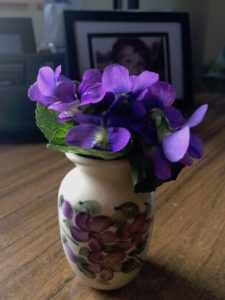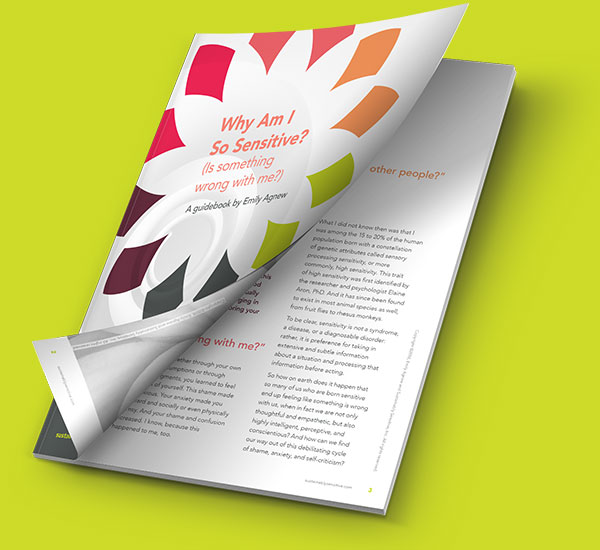Like many HSP’s I fall hard when I fall in love. It was like that from the start. My teen romances felt like the Queen hit, Crazy little thing called love:
This thing (this thing)/Called love (called love)
It cries like a baby/In a cradle all night
It swings (woo woo)/It jives (woo woo)
It shakes all over like a jelly fish
I kinda like it
∼Freddy Mercury
No wonder I grew up thinking of love as a feeling. The pop songs, the novels, the movies—the idea is everywhere. There’s just one problem with this:
“Love as a feeling” has serious drawbacks.
Just because an idea is widespread doesn’t mean it’s good. As a young lover my belief in “love as a feeling” caused me a lot of suffering. If I felt anything other than rapturous, melting devotion towards my current boyfriend, a sense of panic and dread would escalate. I’d monitor him for signs of flagging passion too.
This stressed me out, and no wonder! Using my superpower of 20/20 hindsight, I can now see what I was telling myself and my boyfriends:
- If I love you, I should feel a certain way towards you
- If you love me, you should feel a certain way towards me
- If I don’t feel that certain way, I must not love you
- If you don’t feel that way, you don’t love me
By thinking of love as a feeling, I doomed myself to impossible control games. I pushed down, denied, or ignored any feelings that threatened these beliefs, because the thought of not loving my partner or him not loving me was too painful to acknowledge. Even a glimpse of a possible break-up would send my HSP brain into overwhelm of unpleasant anticipation.
Yikes. No wonder I stressed over my relationships. And given what I hear from clients, I wasn’t the only one going through this.
Marshall Rosenberg and love as a need
At last, in my late thirties, I encountered a more helpful way to approach the idea of love: Nonviolent Communication, Marshall Rosenberg’s language of feelings and needs. Though Marshall protested that NVC contained nothing new—he drew its principles from the great spiritual and wisdom traditions—he made a brilliant contribution to human self-empowerment when he clarified the crucial relationship between our feelings and our needs.
Specifically, all of us humans share the same universal human needs, ranging from physical needs like air, light, and water, to emotional needs like respect, autonomy, and connection, to spiritual needs like beauty, communion, and inspiration.
Most important, NVC clarifies that our feelings result from our needs being met or unmet. We can contribute to meeting each other’s needs: that is one of the greatest joys in life, and “contribution to others” is an important need in its own right. However, each of us is ultimately responsible for our own needs. We give up our freedom and happiness if we get too attached to a particular strategy (or in my case, a particular boyfriend) to meet a need.
When I began to think of love as a need, I was inspired ask powerful new questions of myself and of others around me. These questions reflect curiosity, openness, and respect of each other’s autonomy:
- What meets my need for love?
- What meets your need for love?
- Are you willing/able to do the things that meet my need for love?
- Am I willing/able to do the things that meet your need for love?
Love and violets
My violet photo above holds subtle layers of answers to these questions. It shows how tenderly personal the strategies are that meet people’s need for love:
- My mom found the violet vase in Poland and brought it back for me. It meets my need for love in a very sweet way to know people are thinking of me when we are far apart.
- When I pick violets and bring them in the house, that meets my partner’s need for love: he loves flowers, and I’m happy to meet his need for love that way.
- As a child, I walked to my piano lessons after school and every spring I’d stop along the way to pick violets for my much-beloved teacher. Remembering her delight, I’m sure the gesture met her need for love.
All that in one small vase of violets.
Many HSPs find it challenging to acknowledge their needs, let alone to honor or them or to ask others to help meet them. Yet learning to do that is key for the health of your relationships. I’ll talk about this in more depth next time.
Photo by Emily Agnew, ©2017




















Enjoyed your post, Emily. I was delighted and intrigued by the lovely violets and their vase, so it was especially delightful to hear the stories and the layers of sweetness and meaning held there.
Thank you Adelia:)…it’s lovely to hear from you. There were more layers…my partner leaves the violet-y part of the lawn un-mowed for me so I can pick them…
Dear Emily,
I guess I was born 60 years too early, because I sure could have used this info when I was 14! Not sure that it would have had the same impact back then, but if I had understood it it would have saved me a lot of grief. Thank you for this. I will share it with grandchildren 🙏
Mary, yes, I too wish I had known it much sooner. I was so terrified to “rock to boat” in my relationships, I avoided the very conversations (including simply checking out my stories to see if they were true!) that would have opened things up and moved them forward.
That is lovely to think of sharing this with your grandchildren:)